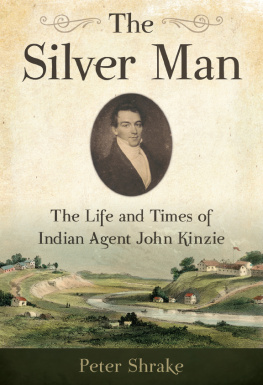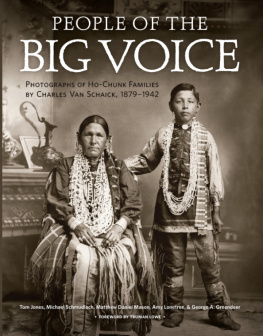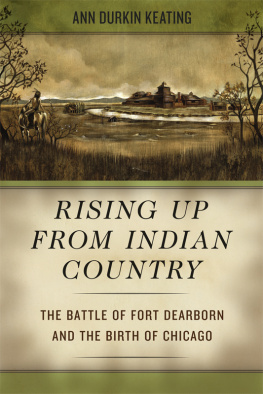
The Silver Man

THE SILVER MAN
The Life and Times of Indian Agent John Kinzie

PETER SHRAKE
Wisconsin Historical Society Press
Published by the Wisconsin Historical Society Press
Publishers since 1855
2016 by the State Historical Society of Wisconsin
E-book edition 2016
For permission to reuse material from The Silver Man (ISBN 978-0-87020-740-2; e-book 978-0-87020-741-9), please access www.copyright.com or contact the Copyright Clearance Center, Inc. (CCC), 222 Rosewood Drive, Danvers, MA 01923, 978-750-8400. CCC is a not-for-profit organization that provides licenses and registration for a variety of users.
wisconsinhistory.org
Photographs identified with WHi or WHS are from the Societys collections; address requests to reproduce these photos to the Visual Materials Archivist at the Wisconsin Historical Society, 816 State Street, Madison, WI 53706.
Designed by Ryan Scheife / Mayfly Design
20 19 18 17 16 1 2 3 4 5
Library of Congress Cataloging-in-Publication Data
Shrake, Peter.
The silver man : the life and times of Indian Agent John Kinzie / Peter Shrake. 1st edition.
1 online resource.
Includes bibliographical references and index.
Description based on print version record and CIP data provided by publisher; resource not viewed.
ISBN 978-0-87020-741-9 (E-book) ISBN 978-0-87020-740-2 (pbk.) 1. Kinzie, John H., 18031865. 2. Ho Chunk IndiansGovernment relationsHistory19th century. 3. Indian agentsUnited StatesBiography 4. Ho Chunk IndiansWars. 5. Fort Winnebago (Wis.)History. 6. Frontier and pioneer lifeWisconsin. 7. WisconsinHistory19th century. 8. WisconsinBiography. I. Title.
E99.W7
323.1197526dc23
2015035319
For Dad
Publication of this book was made possible in part through a generous grant from The National Society of The Colonial Dames of America in the State of Wisconsin.

The Indian Agency House, built for John Kinzie and now owned and operated by The National Society of The Colonial Dames in the State of Wisconsin. COURTESY OF DELLA NOHL
I have learned many things while writing this book, but chief among them is the realization that a book is not just the efforts of one individual. It is, in reality, a group project. Certainly there is an author, but that author is supported and assisted by a broad range of individuals who all in some way made critical contributions to the project.
This book first started with an invitation by Destinee Udelhoven, the former Director of the Historic Indian Agency House to deliver a presentation on the career of John H. Kinzie in 2010. That lecture in turn led to an article published in the Wisconsin Magazine of History two years later. It was the Board of Directors of the Wisconsin Chapter of The National Society of The Colonial Dames of America (the organization that owns and administers the Historic Indian Agency House), most notably Anne Vravic, who first raised the idea of expanding the article into a book. I was not sure I wanted to tackle such a project, but Anne was persistent. Her constant encouragement ultimately culminated in the work you see here. It also must be acknowledged that the board generously provided funding to help with research and publishing.
The Colonial Dames were the spark, but the editorial staff at the Wisconsin Historical Society Press carried the heavy load of transforming a mass of words into a cohesive manuscript. Director Kathy Borkowski provided endless encouragement. Senior Editor Kate Thompson exhibited great patience waiting for a first draft as I blew past several deadlines. My greatest debt is to Developmental Editor Carrie Kilman, who worked with me to forge the manuscript into its final form.
As an archivist it would be impossible for me not to acknowledge the kind assistance of staff at the Museum of the Confederacy, Chicago Historical Museum, Newberry Library, Kenyon College, and the Wisconsin Historical Society. Though I imagine many would say they were merely doing their job, it is by doing their job that people like me can do projects such as this.
Finally, this book would not have been possible were it not for the patience and support of my family. There were many days when my mom, Kathy Shrake, watched the kids and provided me many quiet hours to write. My wife, Kim, not only watched the kids but also had to endure countless impromptu lectures about Jacksonian Indian Policy and John Kinzie, as well as live with a husband who forever has his head stuck in the far distant past. But it was my two boys, Ben and Ethan, who really made the greatest effort. For over a year, both boys, both under the age of ten, displayed incredible understanding and patience (they actually hate that word despite my best efforts) as their dad worked from behind closed doors.
A book project is indeed the culmination of the efforts of many, but in the end the final responsibility for its accuracy lies with the author. Any and all errors or omissions found within are mine and mine alone.
PETER SHRAKE
In the early nineteenth century, the portage between the Fox and Wisconsin Rivers was an isolated place. Located deep in the Wisconsin interior, the area had a marshy quality, with open rolling hills edged by oak groves. Only a mile and a half separated the two rivers. This narrow strip of land helped to connect the Great Lakes with the Mississippi River. From Lake Michigan, travelers heading west could take the Fox River to the portage, cross over land to the Wisconsin River, and follow it to the Mississippiwith the course reversed for travelers heading east. As a result, the FoxWisconsin waterway quickly became an important northern highway.
Several local businesses provided aid to travelers as they made the crossing between the two rivers, and the American Fur Company maintained a post there. The portage was also where the territory for the Ojibwe, Menominee, and Ho-Chunk tribes converged.
For all of the portages strategic and economic importance, the federal government never intended to establish an Indian agency or a military installation there. Indian affairs were guided by agencies at Green Bay, Fort Snelling, Prairie du Chien, and Chicago. But a series of events, beginning with the end of the War of 1812 and culminating in a crisis in the summer of 1827, changed the opinion of officials in Washington, and in 1828 Fort Winnebago and its accompanying Indian subagency would be established approximately 1.5 miles northeast of the Wisconsin River on a hilltop overlooking the Fox River.
In the years following the War of 1812, Wisconsin was a region grappling with transitions. One empire, Great Britain, was receding, and a new one, the United States, was on the rise. Population dynamics were in flux as Yankees from New England and southerners from Missouri, Kentucky, Tennessee, and the Carolinas were pushing against the various Native tribes and the old French and mixed-ancestry inhabitants. The economy was shifting, from the fur trade to mining, lumber, milling, and agriculture. The two main communities in the region were still Prairie du Chien and Green Bay, but with the advent of lead mining, countless new settlements were springing up south of the Wisconsin River. Despite












